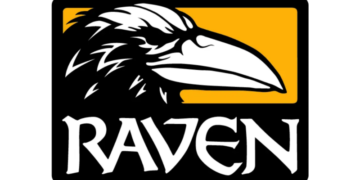In an era where vehicles operate as sophisticated computers on wheels, brimming with connectivity and autonomous features, the risk of cyber threats has become a paramount concern. A malicious attack on a vehicle is no longer a theoretical problem; it’s a direct threat to public safety and personal data security. In response to this urgent need, the automotive industry has established a global benchmark: ISO 21434 “Road vehicles — Cybersecurity engineering.” This standard provides a comprehensive framework for creating a resilient and secure automotive ecosystem.
What is ISO/SAE 21434?
ISO/SAE 21434 is an international standard that defines the requirements for cybersecurity risk management across the entire lifecycle of a road vehicle. Its scope is exhaustive, covering every phase from the initial concept, through development and production, all the way to operation, maintenance, and eventual decommissioning.
Crucially, it is a process-oriented standard, not a product-certification one. It doesn’t provide a checklist of specific security technologies a car must have. Instead, it mandates a structured and documented process for how an organization should manage cybersecurity, ensuring that security is a foundational principle, not an afterthought.
The Core Pillars of Compliance
Achieving compliance with ISO 21434 requires organizations to embed cybersecurity into their corporate DNA. This is built upon several key pillars:
Cybersecurity Management System (CSMS)
The heart of the standard is the automotive cyber security requirement for manufacturers to establish and maintain a CSMS. This is a set of organization-wide policies, procedures, and governance structures dedicated to cybersecurity. A compliant CSMS ensures that:
- Cybersecurity responsibilities are clearly defined.
- Employees are trained and aware of cybersecurity risks.
- Processes are in place for managing threats and vulnerabilities.
- A “culture of security” is fostered throughout the organization.
Lifecycle Management
ISO 21434 demands that cybersecurity is considered at every stage of a vehicle’s life:
- Concept & Development: Security goals are defined at the very beginning of a project. A “security-by-design” approach is taken, building security into the vehicle’s architecture.
- Production: Secure processes are implemented to prevent vulnerabilities from being introduced on the manufacturing line.
- Post-Production: This is a critical and ongoing phase. Manufacturers must continuously monitor the vehicle fleet for new threats, manage vulnerabilities through patches, and securely deliver over-the-air (OTA) updates.
Threat Analysis and Risk Assessment (TARA)
Compliance requires a systematic and repeatable method for identifying and evaluating risks. The standard outlines the TARA process, where engineering teams must:
- Identify potential threats to vehicle components and systems.
- Analyze the likelihood and potential impact of these threats (on safety, finances, operations, and privacy).
- Determine the overall risk level.
- Decide on appropriate risk treatment, such as implementing security controls to mitigate high-risk threats.
Why Compliance is Non-Negotiable
Adherence to ISO 21434 is no longer optional; it is a critical requirement for market access and operational integrity.
- Regulatory Mandate: International regulations, most notably UN Regulation No. 155 (UN R155), require that automakers have a certified CSMS in place to gain vehicle type approval in dozens of countries, including the European Union, Japan, and South Korea. Without ISO 21434 compliance, you cannot sell your cars in these markets.
- Supply Chain Security: The standard extends responsibility across the entire automotive supply chain. Automakers (OEMs) are required to ensure that their Tier 1 and Tier 2 suppliers also adhere to cybersecurity standards, creating a unified and secure development ecosystem.
- Building Trust: In a world wary of cyber threats, demonstrating compliance with a rigorous international standard is a powerful way to build trust with consumers, regulators, and business partners, proving a tangible commitment to vehicle safety and security.
In conclusion, ISO/SAE 21434 provides the essential framework for the automotive industry to manage the complex world of vehicle cybersecurity. It is a holistic, lifecycle-based approach that is fundamental to enabling the future of safe, secure, and reliable connected vehicles.











































